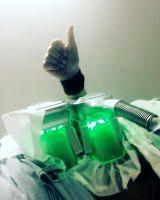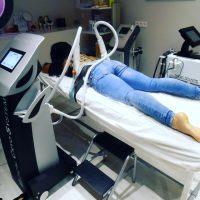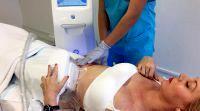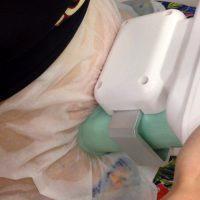Cryogenic Lipolysis Before And After Photos
Cryolipolysis (also called “cold sculpting”, 3D Lipo, cryolipolysis, and cryolipodestruction) is a local cooling of fat folds with their subsequent destruction.
Coolsculpting is the fat destruction by exposure to cold. Cryogenic lipolysis is the process of controlled cooling of the skin surface to reduce local fat deposits. In addition to cold, mechanical pressure also appears on the subcutaneous fatty tissue.
Cryogenic lipolysis is positioned as a soft and natural alternative to surgery, which will get rid of excess fat deposits unobtrusively.
The procedure is carried out mainly on the back, sides and / or on the stomach: it is in these places that “stubborn” fat occurs, which can not be eliminated by diets and exercises.
There are two options: to live with fat or to remove it with the help of painful liposuction, a good alternative to which can become cryogenic lipolysis.

A Non-surgical, Non-invasive Procedure Is Available That Can Literally Freeze Away Targeted Fat
The principle of cryogenic lipolysis
Cryogenic lipolysis kills fat cells under the skin due to local cooling, literally freezing them until complete elimination.
Freeze at the same time exclusively fat cells – the remaining cells in the thickness of the skin are not damaged.
For comparison, procedures that use a laser, sound waves or even a fat removal surgery destroy not only fat but also other healthy tissue in the process.
It takes more time to recover, and of course, it is quite traumatic for the patient.
Massage normalizes metabolic processes in the subcutaneous fat and speeds up the removal of fat.
Advantages of cryogenic lipolysis: no scalpels, no scars. After crystallization, the fat cells die and are naturally removed in the process of metabolism.
Significant improvements can be achieved within a few months – if one believes the experts practicing this method.

Cryogenic Lipolysis On Medical Cryo System
How does Cryogenic lipolysis work?
The procedure is carried out in a cosmetology clinic. Unlike many other procedures, the cryolipolysis session takes less time and in itself is quite simple. It can even be appointed during lunch time.
After one visit, you can already see a reduction in fat. But in order to fully realize the dream of ideal body it will take several months.
A special applicator acts on the treatment zone, which captures the fold of the skin and subcutaneous fat with the help of vacuum. The “flap” of skin for a single capture approximately occupies an area of 18×5 cm.
In one hour of the cryolipolysis session, from 2 to 6 such zones can be treated.
Next, the skin folds for a few minutes are heated to 40-42 ° C, then – sharply cooled. Some devices allow to achieve cooling to 5 ° C. This thermal shock is fatal to fat cells. As a rule, the cryolipolysis procedure is performed within 45-60 minutes.
Doctors propose to use cryogenic lipolysis along with radial impulse therapy with the aim of losing weight: such an integrated approach showed better results than using only cryolipolysis, allowing to accelerate the elimination of fat and shorten the intervals between procedures.
Complications of Cryogenic lipolysis treatment
The risks associated with cryogenic lipolysis are mostly short-lived and generally moderate. The most widespread such side effects of cryolipolysis, as bruises and swelling, much less often – pain.
According to American statistics, there were only 23 cases with “severe pain” in more than 60,000 cryogenic lipolysis procedures that were conducted from June 2009 to December 2010. That is, severe pain was noted in about 0.05% of patients who underwent cryogenic lipolysis.
The most intense pain occurred when carrying out cryolipolysis in the abdomen: it was of an increasing nature and disappeared after 3-4 days. Specialists use lidocaine in order to reduce the risk of pain, for external use.
The good news: besides unstable redness, Cryogenic lipolysis treatment does not cause discoloration of the skin and can be carried out with hyperpigmentation.
Contraindications to Cryogenic lipolysis treatment
- Allergy to cold (cold urticaria);
- Atopic dermatitis, eczema or a rash of a different nature in the treatment area;
- Injuries and skin infections, as well as scars in the treatment area;
- Autoimmune diseases;
- Pregnancy;
- Pacemaker;
- Vascular disorders in the treatment area.

